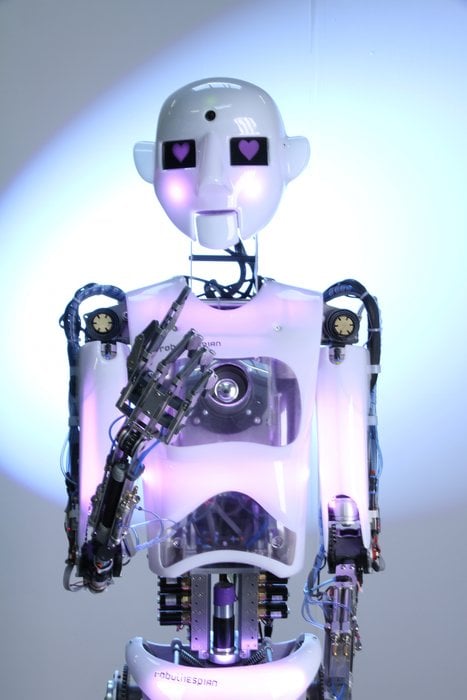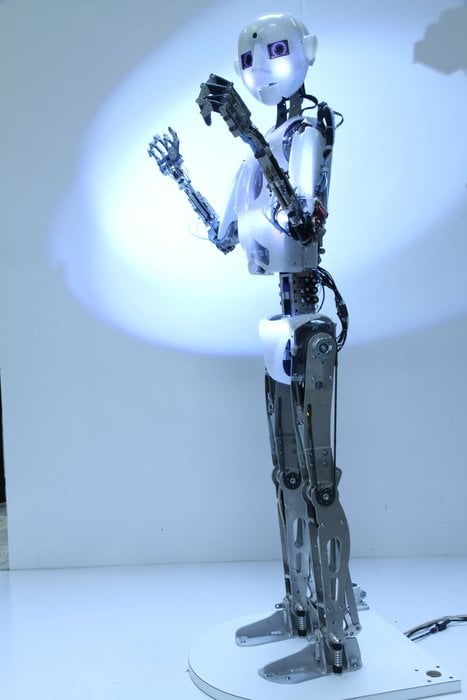www.industryemea.com
05
'12
Written on Modified on
MapleSim Aids in the Design of RoboThespian Robot that Walks and Talks
System-level modeling in MapleSim critical for complex, multibody systems

The goal of the RoboThespian project is to make humans think more deeply about humanoid robotics and artificial intelligence. Cinematic, theatrical and engineering techniques combine to produce entertaining robots that tackle challenging ethical, environmental and social issues. Being fully interactive, user friendly, and capable of speaking more than a dozen languages, RoboThespian is capable of communicating and entertaining in a way that few people have experienced before.
RoboThespian robots are used by science centers in 14 countries and can be seen entertaining and educating visitors in theatrical installations around the world. Max Q, the RoboThespian installed at NASA Kennedy Space Center, is programmed to answer questions about space including the Hubble Telescope and astronauts' life in space, with the goal of educating and inspiring visitors.
A walking robot will not only take RoboThespian’s performance as an entertainer and educator to the next level, but the robot prototype will also be used as an advanced research platform that explores verbal and non-verbal communication, human-robot social interaction, object tracking and recognition, and many other areas.
“The next generation RoboThespian has a full-sized dynamic humanoid design which presents complex challenges,” said Will Jackson, Director, Engineered Arts Limited. “With it, we will take robotic engineering to levels of complexity and performance not seen before. MapleSim significantly simplifies the task for us with its unique but highly efficient modeling and simulation platform. The capacity to simplify, solve and interact directly with differential equations was a big enabler in modeling and analyzing physical interactions of the robot components. The complex interaction between interdependent variables could be relatively easily modeled because of MapleSim’s system-level approach to modeling.”
In MapleSim, revolutionary multibody technology is combined seamlessly with advanced multi-domain modeling tools to provide all the functionality engineers need in a single environment. This unique technology means MapleSim provides engineers with unparalleled flexibility and control of their multibody models.
The design engineers at Engineered Arts are currently using MapleSim to design a biologically analogous humanoid robot leg integrating a novel actuator, studying its static and dynamic stability, and building the designed leg to determine strategies for its control. The design is analogous to the human musculoskeletal system. Unlike conventional robots actuated by electric motors, it is characterized by high non-linearity and by humanlike compliance. A MapleSim model of the leg and actuators was built to verify the relationship between actuators under pressure, their contraction and the equivalent joint angles in static states. MapleSim's custom component template was used extensively to model the robot’s pneumatic actuators. The leg model was effortlessly created by a chain of multibody components and the compliant foot was easily modeled with real-time feedback from the 3-D view.
Will Jackson and his team at Engineered Arts aim to have a full-body MapleSim model of the next generation RoboThespian by early 2013, and a working prototype later in the year.


